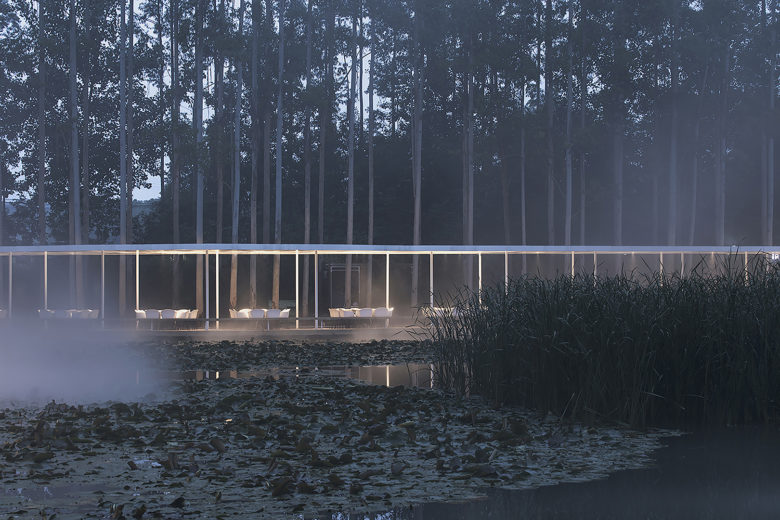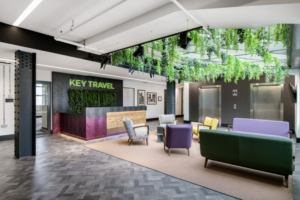

There’s nothing separating the diners of Garden Hotpot Restaurant, situated in the hinterland of Chengdu’s Sansheng Township, from the fragrant eucalyptus trees and the lake, dotted with lotus, surrounding the site. Muda-Architects built it this way, using pillars and boards in lieu of boards. The structure, which wraps around the body of water seamlessly, gives way to a powerful spatial experience and shows the merit in letting nature dictate design, rather than the other way around.
The city of Chengdu is a popular tourist destination given its mild climate, but the suburb of Sansheng Township in particular has a variety of hospitality offerings geared toward urbanites who need a green, quiet escape. The structure of Garden Hotpot is an experience in itself, with a build that gets its visitors connected with nature and relaxed before the meal is even served. And that’s a valuable experience today, as every sector strategises how best to incorporate biophilic design in its spaces. This is biophilic design without the fuss.
Beyond an opportunity to create a unique space for hotpot, an important part of local food culture, the project was a successful ‘experiment in small scale and low cost architecture’ for Muda. The first step in the architectural process for the team was to manually map the site, planning the eventual building according to the location of the trees and the lake. They then worked with the construction team to build a platform around the lake from anti-corrosive wood. Supported by a series of steel columns, the organically curved roof was shaped from galvanised steel sheet, then coated with white fluorocarbon paint. In its entirety, the building applied steel structure welding technologies, which ‘greatly shortened the construction period and reduced the cost.’
The end result, ethereal especially when mist hovers over the lake, feels effortlessly part of ecosystem.
Designed by Muda-Architects
Photography by Arch-Exist




Add to collection










